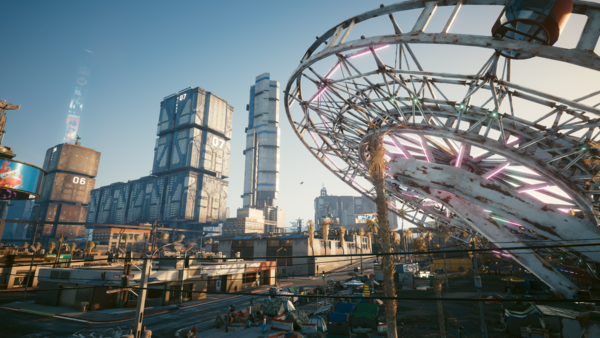A whole new world full of story and adventure. You can discover the rarest items, uncover the deepest secrets, and travel from scorching deserts to freezing tundra. Welcome to open-world, the game mechanic that is sweeping through both the player and the developer communities.

Mostly characterized by its freedom, open-world games allow players to freely roam around the map and interact with it to discover hidden details and content. While the idea of open-world existed early on in video game history, with advances in memories and graphics for both PC and consoles, what was once a fantasy for games is now the standard. Games are now striving for fewer loading screens and more interactions between the player and the environment. Just like the California Gold Rush, today, most major game publishers are swiftly incorporating open-world elements in their productions, and even some of the older titles such as the Pokémon and Lego series started to implement these features in their newest installments to reap the profits of this trend.
There’s a simple reason why many developers with enough manpower are making open-world games. The vast environment and settings allow an easy medium of storytelling and enable a variety of content. Most importantly, it sells. The highest selling games of the past few years like Grand Theft Auto 5 (GTA5), Legend of Zelda: Breath of the Wild (BoTW), Assassin’s Creed franchise, and PlayStation’s Spider-man were all centered around an open-world environment focused on freedom. Then why is the demand so high?
The strongest point open-world has over other game mechanics is its freedom. Being able to do whatever they want and go wherever they want inside the game, players can easily immerse themselves in the game and experience it like no other type of media. GTA5 and BoTW are usually named as the “standard” of open-world games; GTA5 for its sheer vastness and BoTW for its almost limitless interaction with the environment. Unlike traditional games, where players were limited within the small boundaries of maps and interactable objects, these two games revolutionized the restraints games put on their players. GTA5 had a seamless map size of 75.84 km2, which is not impressive compared to the map sizes today, but the amount of content from mini-games and missions along with their diversity within that map set a standard for “good” open-world content. On the other hand, BoTW, with its accurate physics engine and new chemistry engine, revolutionized player interaction and reward system.
These two games were released in 2013 and 2017, but the open-world “rush” is far from over. Major publishers are racing to release new games hoping that it’ll be dubbed the next GTA5 or BoTW. But their urgency is addressing major challenges in creating an open world. The same freedom that attracts users becomes a coding nightmare for developers trying to catch as many bugs as possible before the final release. Unfortunately, they rarely succeed in doing so. Too many interactions coded into a game mixed with a tight release schedule created disappointing, buggy games, like the infamous Cyberpunk 2077. Also, these types of games quickly become repetitive without the right content. The Assassin’s Creed franchises’ most-received criticism was its repetitive gameplay, sarcastically named the “Ubisoft Formula” after the company behind the franchise. The rush to create more open-world games showed how important it was for developers to take their time and meticulously build up their world before the release.
Personally, I enjoy playing open-world games. It provides a great break from all the exhausting school work with its immersive setting and gameplay, escaping zombies by parkouring around buildings in Dying Light or hiding from giant mechanical creatures in a post-apocalyptic world in Horizon Zero Dawn. Even the buggy Cyberpunk 2077 gave me a great time to explore the corporate and street-gang controlled city. Once I start one of these games, it gets me hooked for hours for weeks. But although open-world games have their own unique experience, that is also true for other types of games. Every time I finish one open-world game, I have to take a break from similar games because they become overwhelming after a certain point. And that is what makes the vast variety of games so special. There is no perfect formula for the “best” game. Using state-of-the-art technology does not automatically create the greatest game. Open-world or not, what’s important is the player experience — which sadly, many games today fail to realize.

